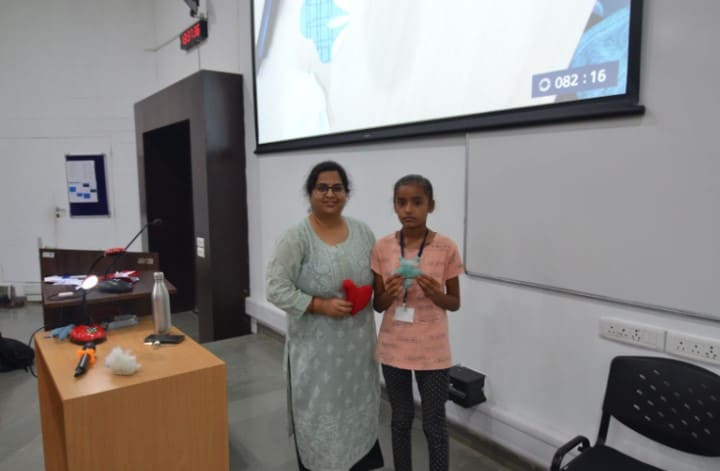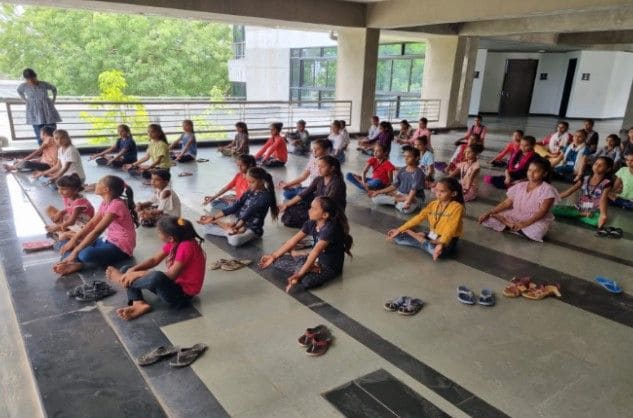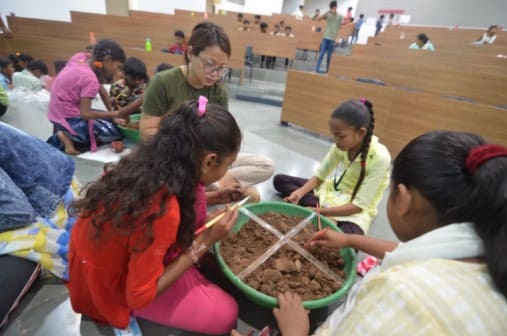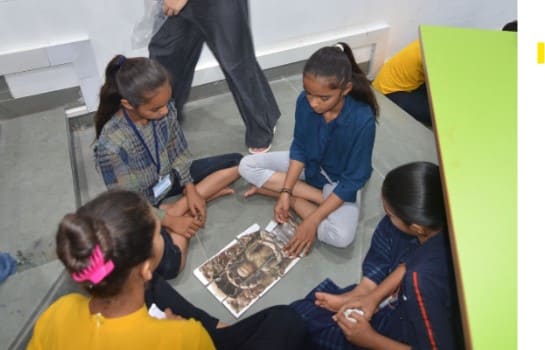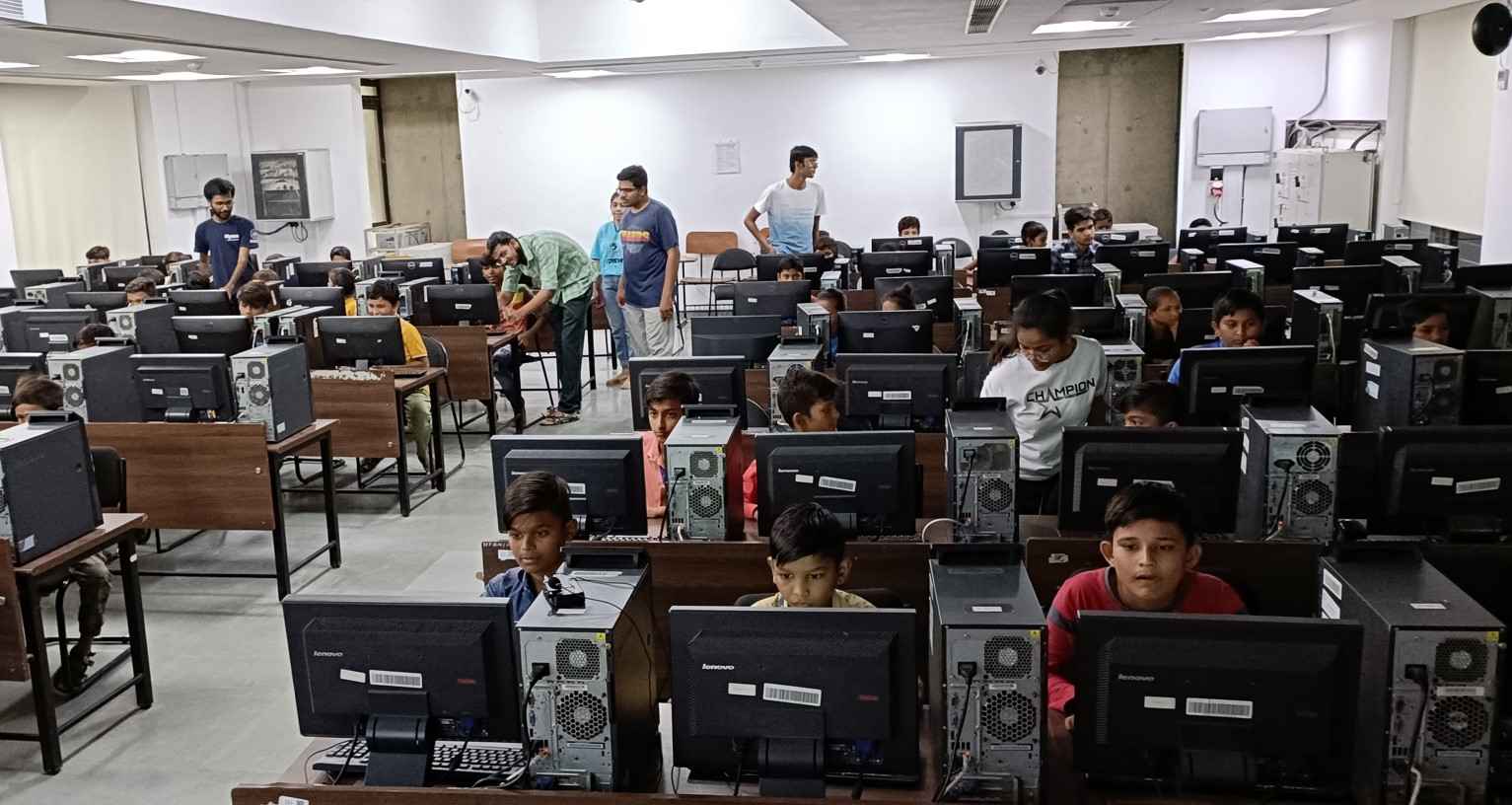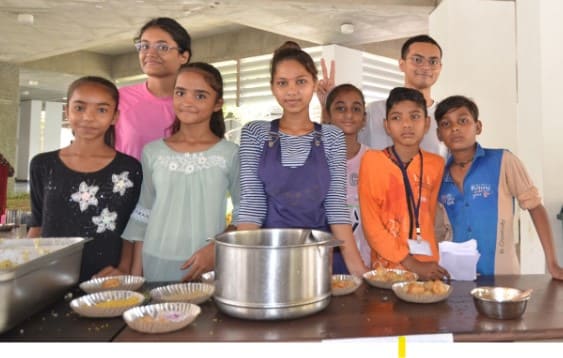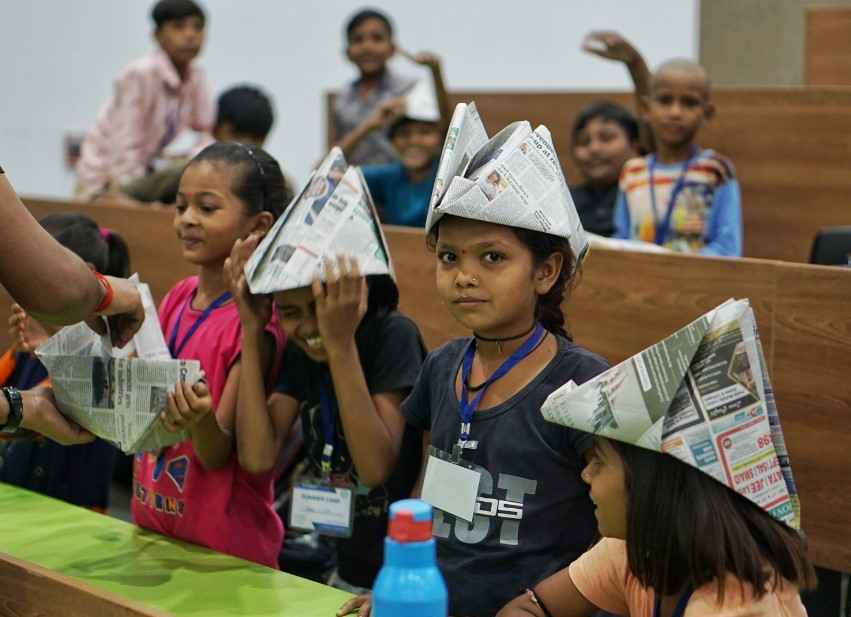Arts & Crafts
A brief craft session was conducted for 60 minutes and covered several interesting concepts on paper folding techniques to create beautiful origami products. By the end of the session, every participant was able to make an origami tulip flower.
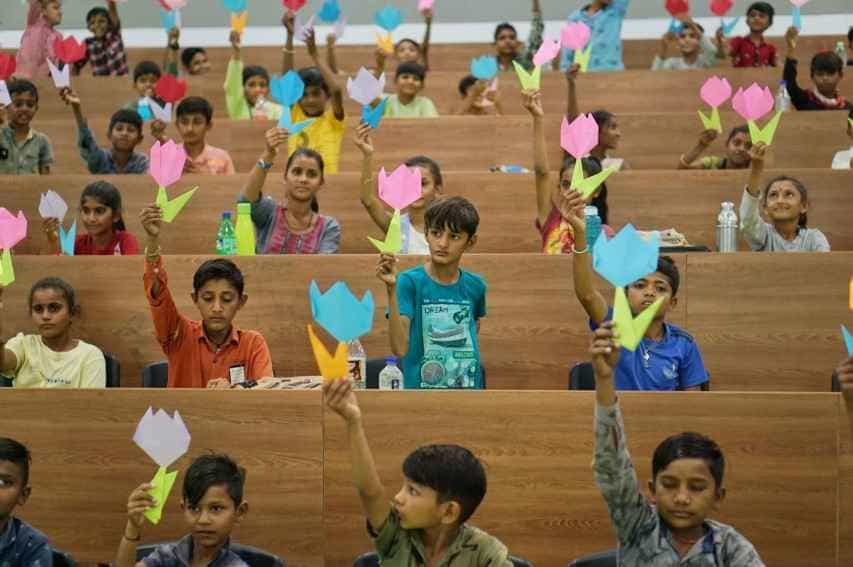
A session by art@ iitgn was also conducted on collage making, whereby students made collages using magazine paper, cloth and waste newspaper, on the theme “underwater”.
The painting session was focused on exploring the concepts of basic artwork with mixed media. The children used various mediums/materials like paint, colored paper, buttons, and vegetable and used techniques like vegetable printing, painting, etc to create an artwork as a team. By engaging the children in this group activity, they participated in team-building exercises and leadership skills parallelly.
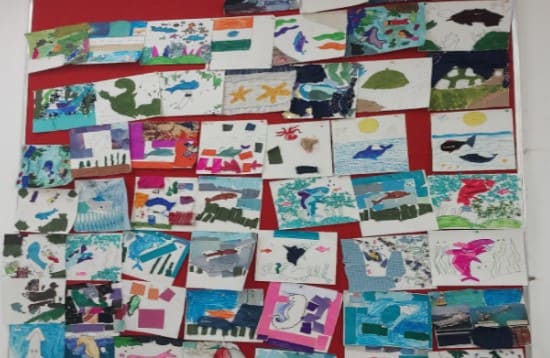
A hands-on session on soft toy making was also introduced where soft toys on heart and star shapes were made. This session allowed students to develop their stitching skills and unleash their creativity while creating personalised toys to cherish.
